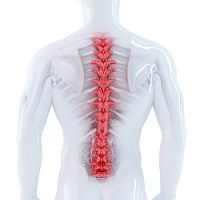Low-Frequency Stimulation Can Aid Spinal Cord Injury
The effect of spinal cord injuries may be alleviated with low-frequency epidural electrostimulation , according to findings published in Spinal Cord.

The effect of spinal cord injuries may be alleviated with low-frequency epidural electrostimulation , according to findings published in Spinal Cord.
Researchers from the International School for Advanced Studies (SISSA) of Trieste, Italy isolated and tested neonatal spinal cords from mice models in order to investigate the importance of input intensity and frequency in eliciting locomotor activity. The investigators then used epidural electrostimulation to pulse at varying intensity and frequency.
This technique was previously used to assist patients paralyzed by spinal cord injuries. The method is designed to produce or aid production of patterns of the motor nerves to help paralyzed people stand and take a few steps, restore sphincter control, and/ or improve sexual function. The researchers used the mice models to demonstrate changes in fictive locomotion (FL) and multiple dorsal roots (DRs) using different stimulation protocols.
The researchers determined that FL was efficiently induced using staggered delivery of low pulse trains, but said there is a long way to go before they can harness the technology to translate it to human improvements. Most of the prior studies, noted researcher Giuliano Taccola in a press release, focused on the technologies of this method and not the nature and quality of the electric signals delivered from the electrodes.
“Current techniques consist of applying a high-frequency signal in a generalized fashion,” Taccola explained. “That way, we get a ‘cumulative’ and somewhat undifferentiated stimulation of a group of nerve fibers. What we did instead was to adopt a ‘multi-site’ approach: the electrical stimulation is applied at different points of the circuit.”
By using the mice models’ spinal neural circuits in vitro, the team was able to pinpoint exact stimulation sites and record the mice’s responses even more accurately.
“The other novelty we introduced was to use a low-frequency stimulation,” Taccola concluded. He further explained that the combination of both the signal frequency and the multiple pulse sites produced differing motor patterns. “With our work we have defined a new spinal cord stimulation strategy for the activation of motor neurons, which may also be imported in many of the stimulators being used in clinical settings.”